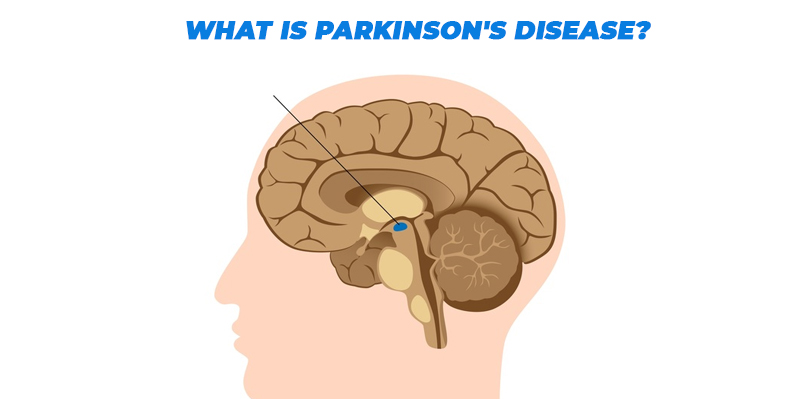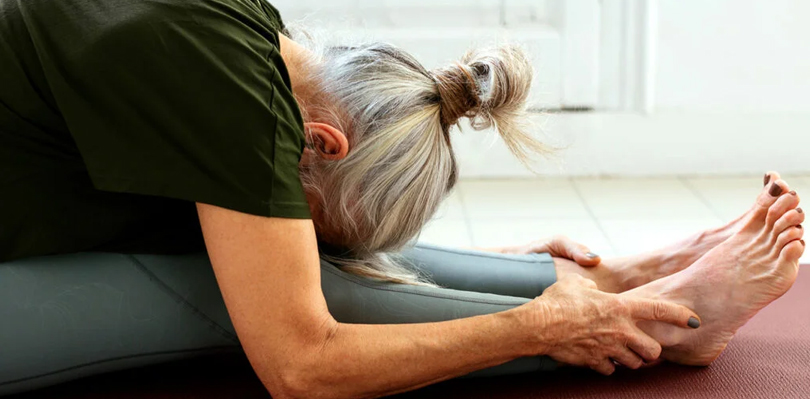Millions of individuals worldwide are affected by Parkinson’s disease, a progressive neurological disorder. Although there is no cure available for this condition, there are several strategies to manage its symptoms and enhance the quality of life for those living with it. One of the most effective and easily accessible strategies is exercise.
What Is Parkinson’s Disease?

Parkinson’s disease is a neurological disorder that progresses over time and primarily affects movement control. It is caused by the gradual loss of certain brain cells that produce a neurotransmitter called dopamine. This chemical plays a critical role in coordinating smooth and balanced muscle movements. When these dopamine-producing cells deteriorate or die, it leads to the hallmark symptoms of Parkinson’s disease.
Effective Exercises To Manage Parkinson’s Diseases

There are various types of exercises that can be beneficial for people with this disease including:
- Physical Therapy Exercises
- Aerobic Exercises
- Yoga Poses
Physical Therapy Exercises
Physical therapy exercises can play a key role in handling Parkinson’s disease by enhancing mobility, balance, and general quality of life. Here are some effective exercises for individuals with Parkinson’s:
Sit to Stand Exercises (Chair Rise)
This exercise helps improve your leg strength and the ability to transition from sitting to standing.
How to Do It:
- Sit on a sturdy chair with your feet flat on the floor.
- Use your leg muscles to stand up.
- Slowly lower yourself back into the chair.
- Aim for 10-15 repetitions.
Ball Squeezes (Hand Grip Exercise)
Hand grip exercises aid in maintaining hand strength and agility.
How to Do It:
- Hold a soft ball or stress ball in your hand.
- Squeeze the ball as hard as you can for a few seconds.
- Relax and repeat several times with each hand.
Seated Leg Marching
This seated exercise improves leg mobility and helps with supporting circulation.
How to Do It:
- Sit in a chair with your feet flat on the floor.
- Lift one leg up as high as comfortable.
- Lower it back down and repeat with the other leg.
- Aim for 10-15 repetitions on each leg.
Yoga Poses For Parkinson’s Disease
Yoga can be a useful method for individuals with Parkinson’s disease, as it promotes flexibility, balance, and relaxation. Here are three yoga poses that may be helpful:
Mountain Pose (Tadasana)
One of the fundamental yoga poses is the Mountain Pose. This pose can help improve balance and posture while also increasing body awareness.
How to do it:
- Start by standing with your feet hip-width apart, with your toes facing forward.
- Keep your arms at your sides, palms facing forward.
- Engage your leg muscles and press down through your feet.
- Lengthen your spine, lift your chest, and relax your shoulders.
- Focus on your breathing while holding the pose for 30 seconds to 1 minute.
Tree Pose (Vrksasana)
The Tree Pose is a great way to improve your balance and concentration.
How to Do It:
- To do it correctly, start by standing with your feet hip-width apart.
- Then, shift your weight onto your right foot and lift your left foot up, placing the sole against the inner thigh of your right leg.
- Make sure to avoid placing it on the knee or too low on the calf.
- Press your hands together in front of your heart, as if in prayer.
- To maintain your balance, focus on a point in front of you.
- Hold the pose for 30 seconds to 1 minute, then switch to the other leg.
Child’s Pose (Balasana)
Child’s Pose is a mild resting pose that can reduce tension in the back and boost relaxation.
How to Do It:
- Kneel on the floor with your big toes touching and knees apart (about hip-width distance).
- Sit back onto your heels.
- Stretch your arms forward on the mat, palms resting on the floor.
- Lower your chest toward the mat and rest your forehead on the floor.
- Breathe deeply and relax in this pose for 1-2 minutes or as long as comfortable.
Aerobic Exercises
Aerobic exercises, also known as cardiovascular exercises, are ideal for improving overall cardiovascular health and boosting stamina, and lung function. Here are three effective aerobic exercises:
Brisk Walking
Brisk walking is a low-impact and easily accessible aerobic exercise that can be done almost anywhere.
How to Do It:
- Find a relaxing pair of walking shoes.
- Start walking at a pace that makes you slightly breathless but still able to hold a conversation.
- Aim for at least 150 minutes of brisk walking per week (or 30 minutes a day for five days a week).
Cycling
Cycling gives you an excellent aerobic workout while being mild on the joints.
How to Do It:
- Use a static bike or ride a standard bicycle outdoors.
- Start with a comfortable pace and gradually increase intensity.
- Aim for 150 minutes of moderate-intensity cycling per week, or adjust the duration and intensity to your fitness level.
Swimming
Swimming is a full-body aerobic exercise that is easy on the joints and offers resistance to help build strength.
How to Do It:
- Find a local pool and swim laps at a pace that challenges you.
- If you’re not a strong swimmer, water aerobics or water walking can also provide a good aerobic workout.
- Aim for at least 150 minutes of swimming per week.
FAQs
What are the early signs and symptoms of Parkinson’s disease?
Parkinson’s disease can exhibit various early signs, but common symptoms include tremors, slowness of movement (bradykinesia), muscle stiffness (rigidity), and balance issues. Other non-motor symptoms may involve mood changes, sleep problems, and a reduced sense of smell.
Is it true that exercise can help manage Parkinson’s disease symptoms?
Yes, physical exercise plays a crucial role in managing Parkinson’s disease symptoms. Performing regular physical activities, such as aerobic exercise, strength training, and balance exercises, can enhance mobility, reduce muscle stiffness, improve balance, and boost overall well-being.
Are there any specific dietary recommendations for people with Parkinson’s disease?
Although there is no specific diet for Parkinson’s disease, maintaining a nutritious and balanced diet is essential for overall health. Some individuals with Parkinson’s may benefit from dietary adjustments, such as increasing fiber intake to manage constipation, ensuring adequate hydration, and possibly adjusting their protein intake to optimize the effectiveness of medication.

